Official team report: Yang Hansen did not exceed expectations for the first time; the team should have run more tactics through him in the fourth quarter
On October 10th Beijing time, Portland Trail Blazers' official reporter Casey Holdahl looked back at Yang Hansen’s preseason debut on a podcast and gave a thorough evaluation. Because Holdahl is an official team journalist, his commentary is relatively authoritative and reliable. The details are as follows—
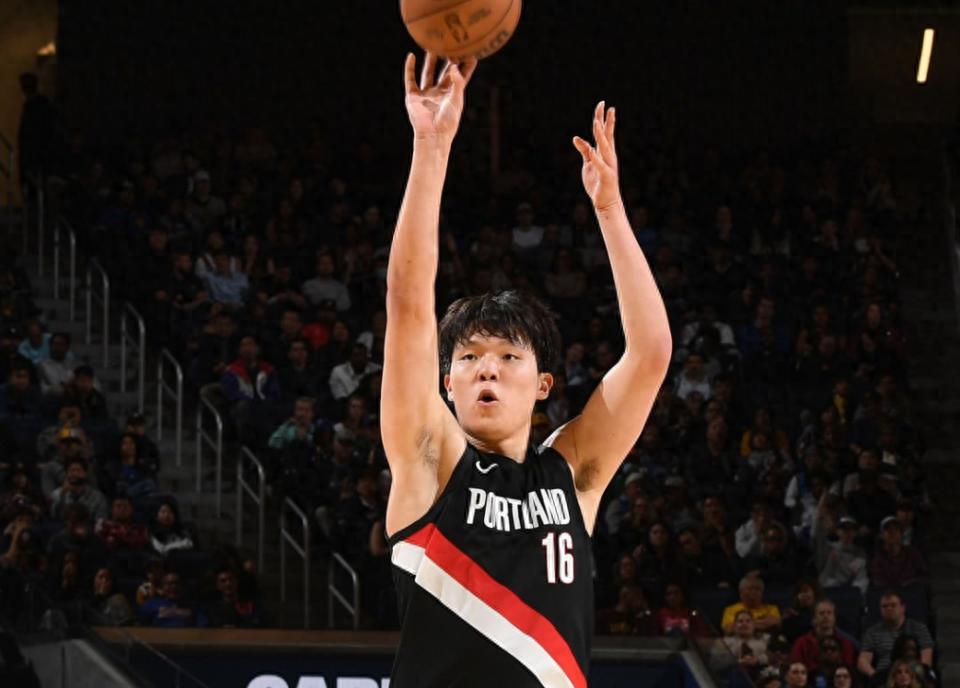
Yang Hansen’s showing in his debut was the first time I thought “he didn’t surpass expectations.”Previously, every time he appeared, he had exceeded everyone’s hopes: the U19 World Cup, the CBA league, joint tryouts, the Trail Blazers’ tryouts, and the Summer League all went beyond expectations. But in the preseason debut, it was the first time his performance didn’t outshine expectations, which is quite normal—after all, he’s only 20 years old, learning the language, and facing a Warriors team that is tough on interior players.
You might say he “struggled,” but I don’t even think it was a struggle; he simply played like a 20-year-old rookie big man experiencing the NBA’s pace for the first time. He played 21 minutes total, scored 4 points, grabbed 4 rebounds, handed out 1 assist, fouled out with six fouls, and four of those fouls came in the fourth quarter.
At least while the game was still at the “main rotation players competing” stage, his foul control was fairly decent. But when the game shifted to bench players—those on two-way contracts and fighting for roster spots—his fouls began to increase.This ties back to the earlier point about “the defensive impact of teammates around you”—when you have teammates who understand defense, guarding becomes easier; but when your teammates are also figuring things out, you face difficulties yourself, especially against a smart team like the Warriors.
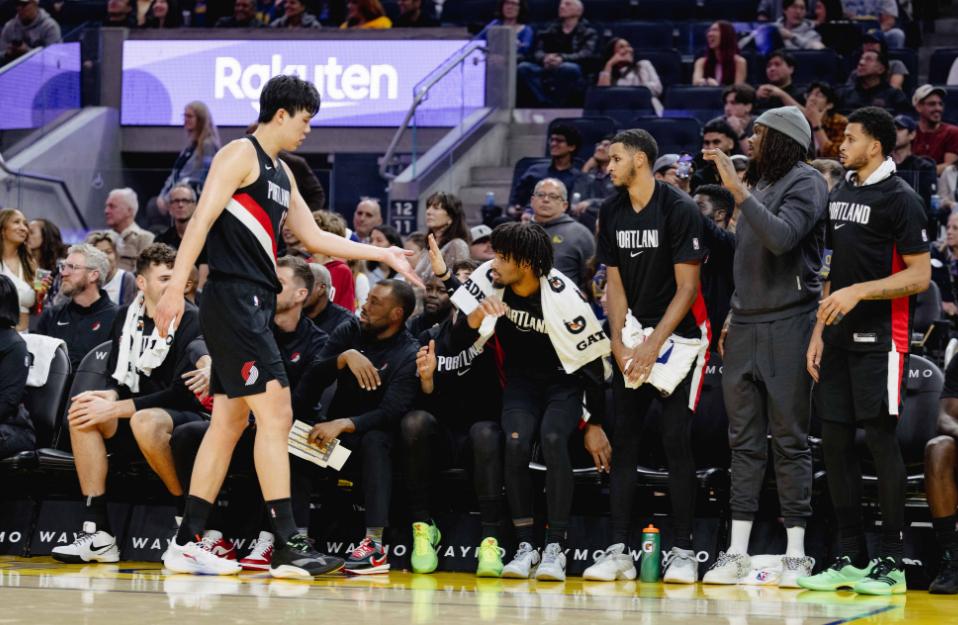
Clearly, the Warriors wanted to win this game, and their bench was undeniably stronger than the Blazers’ bench. However, I don’t believe the Warriors’ starting lineup (at least this game’s starters) was better than the Blazers’. In fact, the Blazers’ starters were clearly superior.
Additionally,I felt Yang Hansen appeared a bit nervous during this game, and I imagine he might admit that himself.The Chase Center was packed, with many fans from China attending specifically to watch the game, along with numerous Chinese media outlets—the postgame press conference had at least ten international media (mostly Chinese) present besides our regular team reporters. Such an environment inevitably adds pressure, and the opponents were aggressively challenging him, so he seemed hesitant on the court.
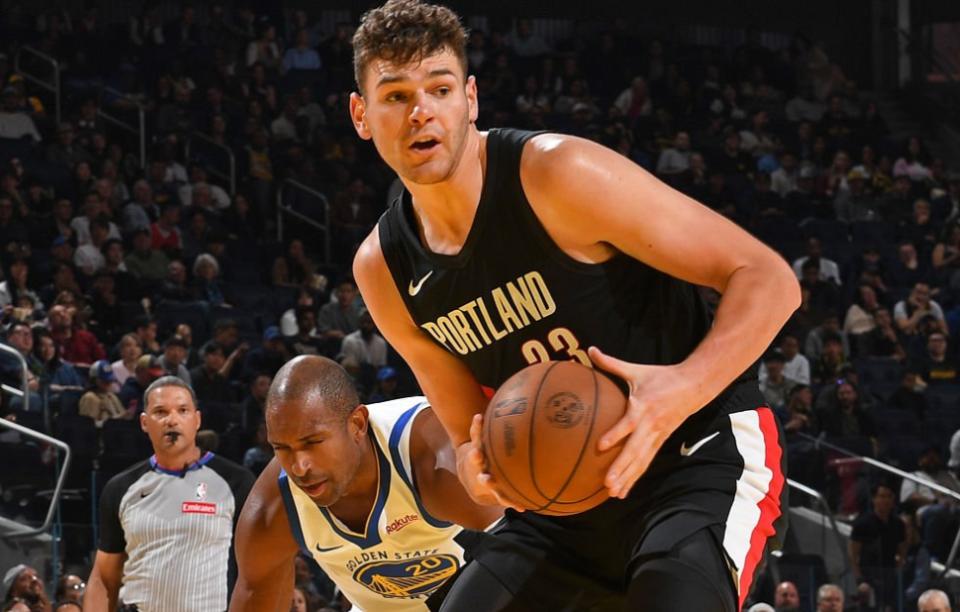
The game’s pace might not be a major issue for him, but he still needs time to adjust.Last season, Klingen had a similar experience when he first started playing.The NBA’s pace, the speed of direction changes, and the defensive recovery demands on big men all require extensive game experience and practice to adapt to, gradually finding a feel for playing at this speed.
Yang Hansen also mentioned after the game that he needs to improve his physical conditioning and strengthen his English comprehension—he emphasized the importance of English multiple times. I believe language skills are indeed critical on an NBA preseason stage, but there’s another question to consider: how do you adapt to NBA games when your language and on-court communication skills are limited?
In other words, both the team and he need to gradually get used to this situation—Yang must learn to play while “understanding some instructions but not others.”The team also needs to find ways to cope, since language barriers will likely persist at least this season.
One detail I really liked was Coach Billups personally guiding Yang on the court. Several times, Billups would get visibly animated pointing out Yang’s mistakes from the sideline. He’s a very passionate coach, but after each correction, he would affirm Yang by giving high-fives, letting him know “It’s okay, I’m just helping you fix things, teaching you stuff. I’m also very competitive and have played at the highest level.”
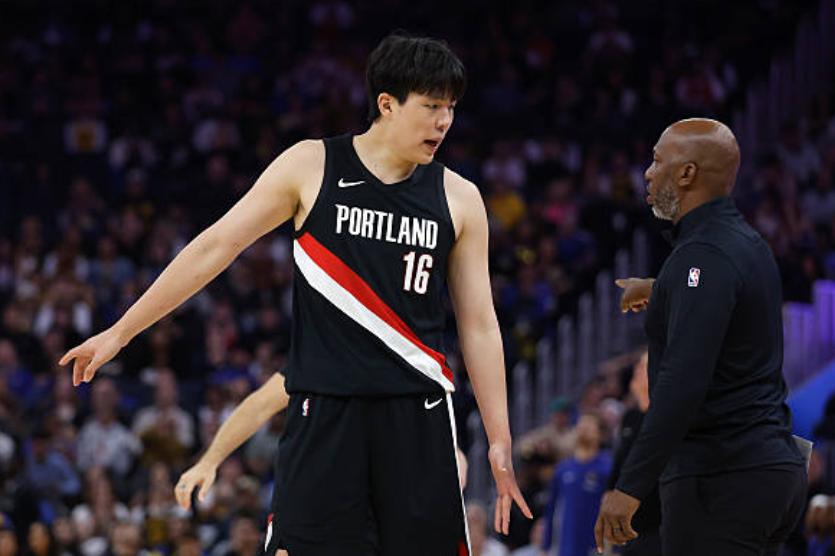
His coaching style is very player-like, so when he points out Yang’s errors and tells him what to do, I believe Yang understands some of it but not all. What’s important is that after the guidance, the coach offers support and encouragement, showing “I’m your coach, I care about you, and want you to improve.”
What stood out was a timeout in the third quarter when Billups walked over to Yang near the paint and seriously explained tactics with gestures. I was sitting in the upper stands, couldn’t hear their words, but saw Billups continuously signaling, and then Yang’s translator Chris rushed from the tunnel to start translating for them.
So, the preseason also serves as a time for the team and Yang to explore “how communication flows when he’s on the court”—such as how to correct mistakes while still playing well. This isn’t just about skills and fitness, but also about “how to progress and perform despite language communication difficulties.” These issues need to be worked through gradually during training camp.
The Warriors are indeed a tough opponent. Although many might hope to see Yang dominate, I never had such expectations—not even expecting him to play easily. He looked somewhat uncomfortable in this game, which was the first time I noticed that feeling on the court, given he was facing the Warriors. He also mentioned postgame that when asked about facing Curry, Draymond, and Horford, he said “It felt like playing 2K.”
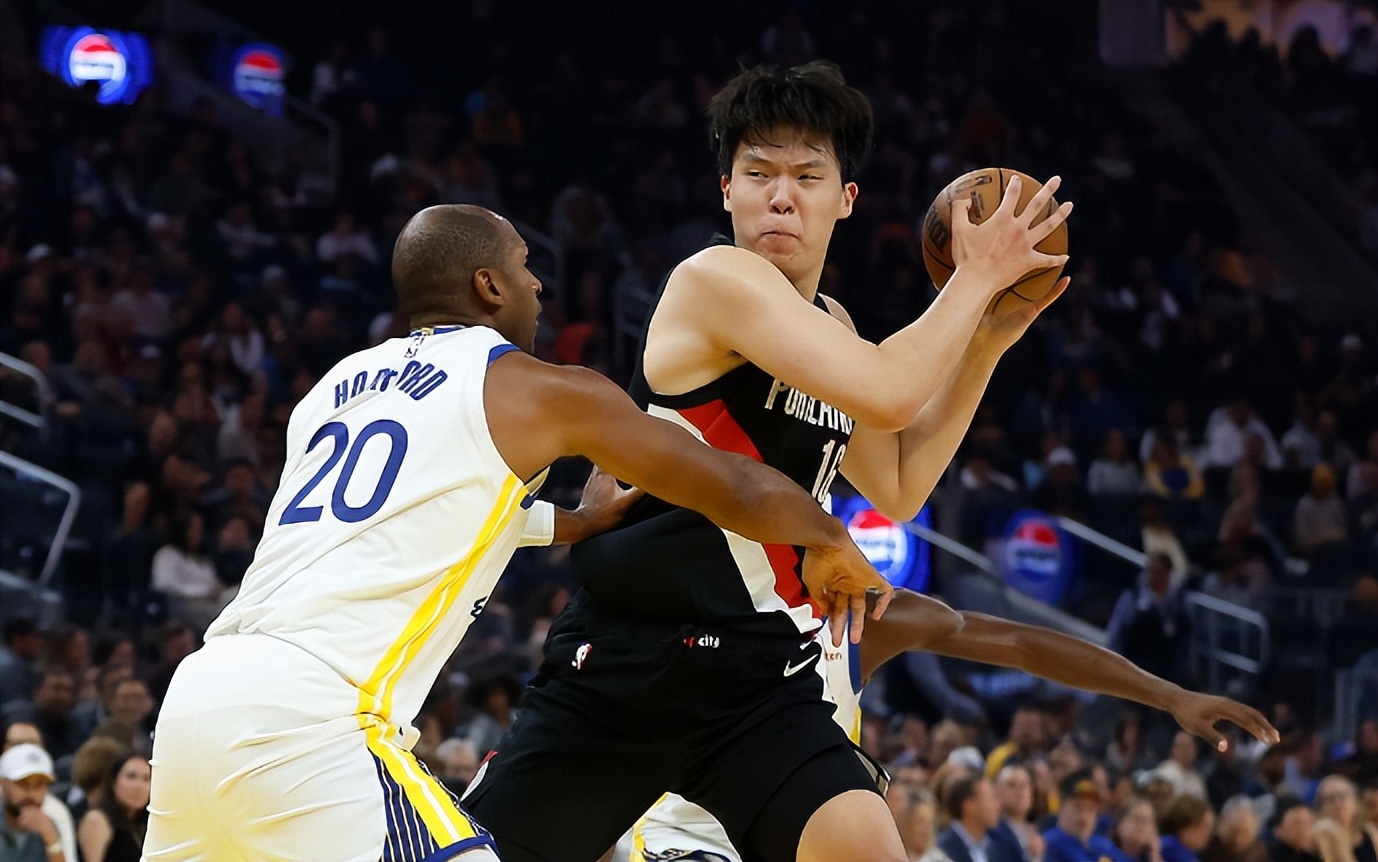
For a player like Yang coming from the CBA, these “NBA moments” inevitably cause some disorientation—maybe not “starstruck,” but a surreal feeling of “Two years ago I was playing for Shandong, and now I’m on an NBA court.”Keep in mind, if you come from college basketball, you might have been exposed to such high-level environments earlier. The CBA is comparatively more closed; if you come from European leagues, the competition is tougher and more open, playing against teams from various countries and even in the EuroLeague, making adaptation easier.
The CBA’s closed nature means players have fewer chances to experience different playing styles, player types, and game atmospheres. So Yang needs time to adjust. But everything I saw in this game didn’t worry me; he just played like a rookie big man from China, and that’s my assessment of his performance.
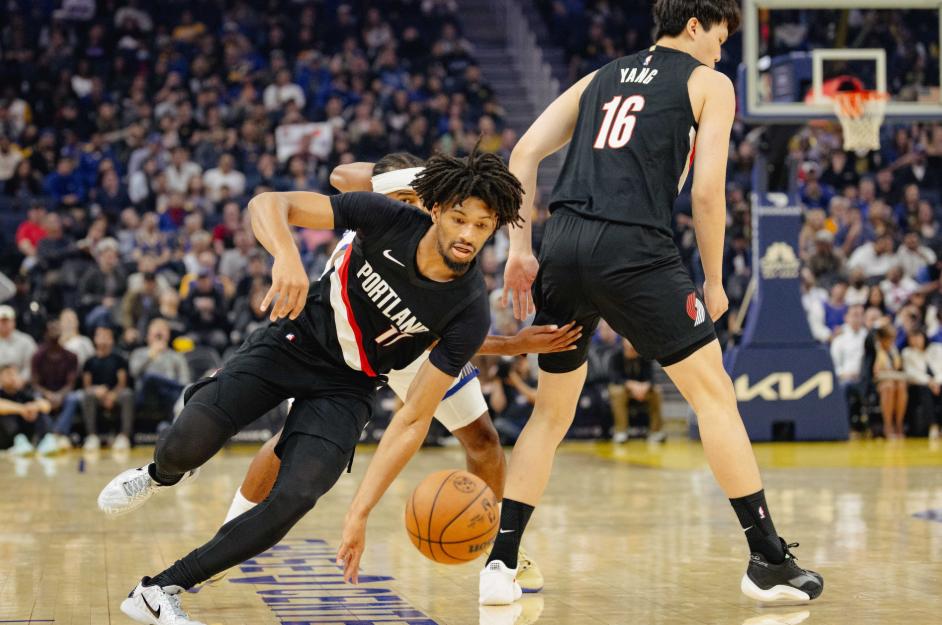
One thing worth mentioning: his plus-minus was -1. Playing 21 minutes and having that plus-minus is actually quite decent.Obviously, a single-game plus-minus doesn’t tell the whole story, but at least it shows that when he was on the court, the team wasn’t completely overwhelmed by the opponent. He’s just slowly adapting and, possibly due to nerves, made more mistakes than usual.
Also, I somewhat hope the team could run more plays through him in the fourth quarter—since the game was already in the hands of the bench, maybe they could give him more opportunities. It’s important to remember,one of Yang’s most notable strengths is his passing decision-making, his ability to create chances for teammates, and his court vision.I had hoped to see more of him organizing offense in the fourth quarter, such as passing to cutting teammates.
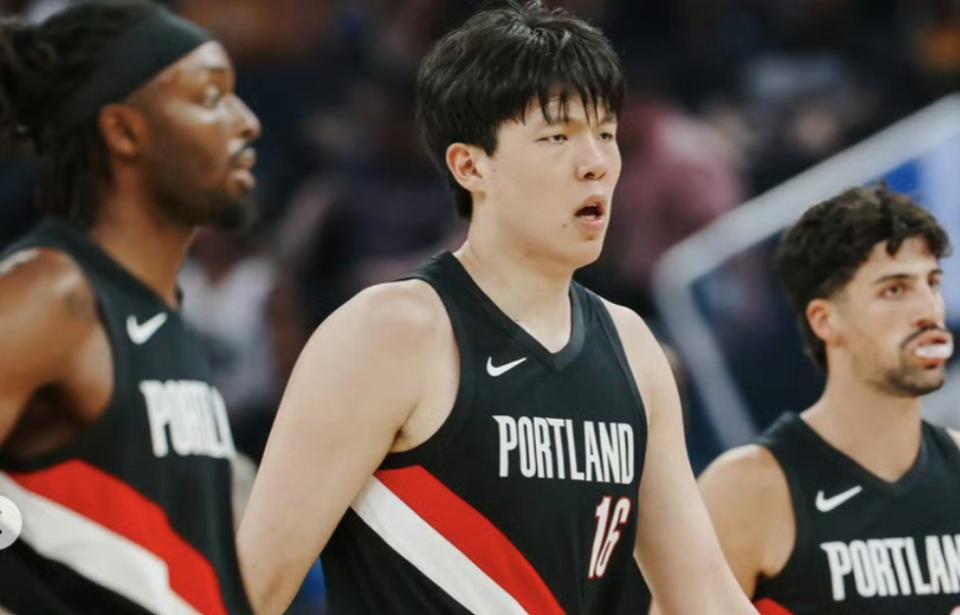
On the one hand, I understand why the team didn’t do this—it might not be part of their offensive plan this season. When Coach Billups was asked if Yang would take on some playmaking duties this season, he said “unlikely,” because the team wants the second and third units’ offensive styles to match the first unit. If the first unit doesn’t emphasize “high-post playmaking, organizing offense, and creating opportunities,” then the third unit won’t either.
So I understand the team’s approach, but looking at the stats, Yang only took one shot in the fourth quarter, while his teammates mostly took more. I still wish he had more shot opportunities and more designed plays to organize the offense in the fourth quarter.
Additionally, the Blazers gave up 51 points in the fourth quarter, and the bench’s performance was not great. So even if they ran plays through Yang, it wouldn’t have made a huge difference. But Coach Billups is highly competitive; he wouldn’t relax just because it was the fourth quarter or say “the game doesn’t matter, let’s try new tactics”—he wanted to win this game. And since the final margin was small, the game was close until the end. I guess Billups was fully focused on winning and didn’t have much energy to experiment with new strategies.


Wonderfulshortvideo
User basketball has posted a video.


🏆 Wemby rolls to the rim 👽 🏆


Luka wearing Irving 5s🤞🤞


Art BY kyrie Irving 📌📌📌


Art BY kyrie 📌


User PANDATV has posted a video.


VJ Edgecombe goes coast-to-coast for the slam 😤








 Links
Links
 Contact
Contact
 App
App


